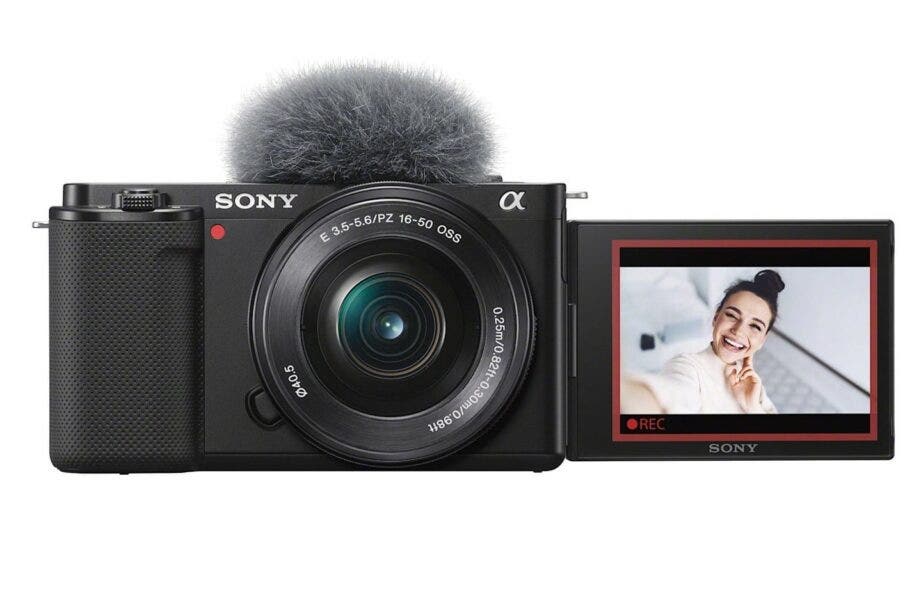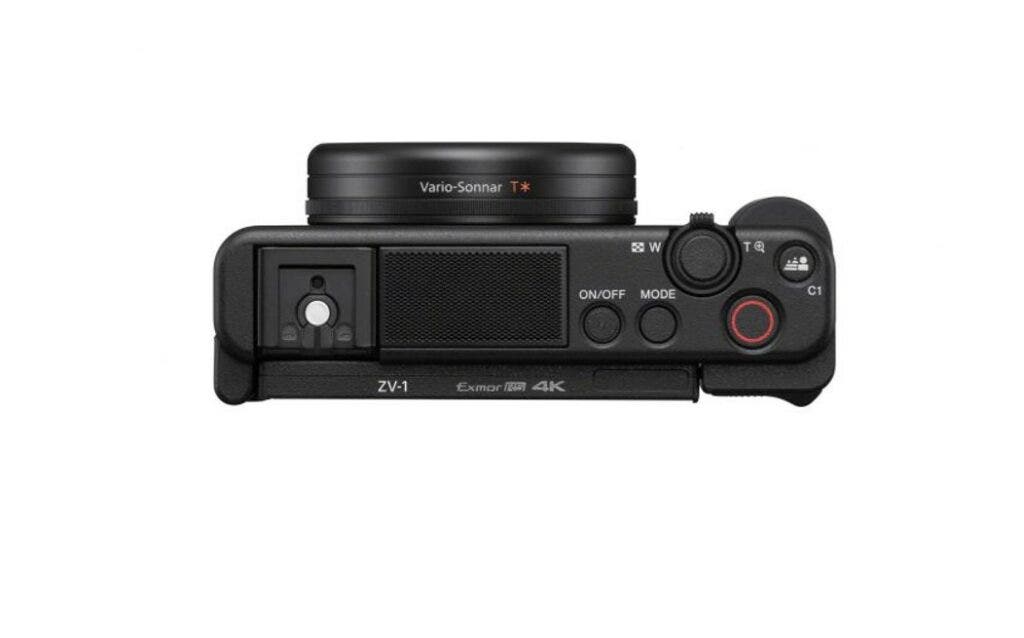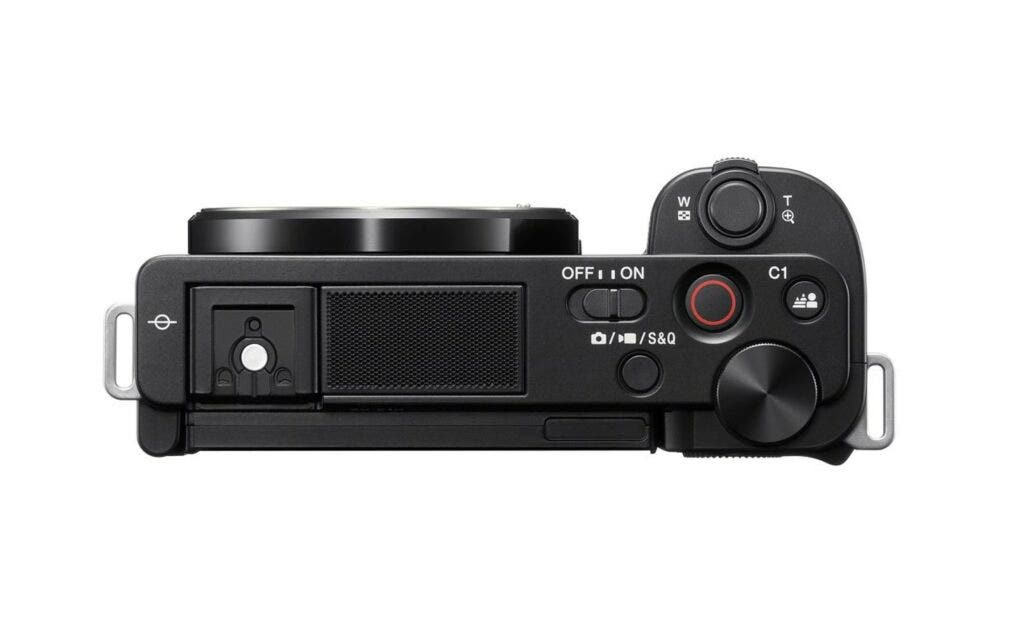
The Sony ZV-1 or the Sony ZV-E10. Both cameras have excellent features are designed for vlogging but there are some big differences between each model. Here we break down the main difference between the cameras so you can make a choice on which one suits your needs.
The ZV-1 was introduced in May 2020 and is a fast compact digital camera with a fixed lens.
The ZV-E10 was introduced over a year later in July 2021 and is a mirrorless camera with interchangeable lenses and a larger sensor.
So with these two new vlogging powerhouses on the block, what’s the best option for you? Let’s compare the Sony ZV-1 against the ZV-E10.
So the Sony ZV-1 or the Sony ZV-E10? - Decision time
As a vlogging camera, the new ZV-E10 has inherited a lot from the older ZV-1, which was the first of Sony’s ZV series.
Both cameras share plenty of amazing features any videographer would love: a top mic, a vari-angle touchscreen, 4K video recording, and more. But there are some large differences between the two models that could be a deal-breaker for you. Check out our video review of the Sony ZV E10 below and read more on feature comparisons.
The All-Important Sensor Comparison
One of the biggest differences between the compact and the mirrorless camera is the size of the sensor—and the camera capabilities that come with that.
In terms of overall image quality, the Sony ZV-E10 is a clear winner here, though if speed’s important, you might prefer the ZV-1.
Sony ZV-1 Sensor
The Sony ZV-1 has a 20MP one-inch Exmor RS sensor. That’s not as big as the ZV-E10 but it’s a stacked sensor.
That means it can produce a rapid readout speed and almost no rolling shutter with the electronic shutter. It also records brilliant continuous shooting and phenomenal super slow motion (more on these below).
Sony ZV-E10 Sensor
The Sony ZV-E10 has a mirrorless sensor that’s about three times bigger than the ZV-1. The 24MP APS-C sensor performs better in low-light conditions with reduced noise.
It also produces smoother colour rendering, a better dynamic range, and smoother background blurring.
Body and Build Comparison Sony ZV-1 vs Sony ZV-E10
Despite being altogether different types of cameras, the ZV-1 and the ZV-E10 look remarkably similar in design. The size and weight of both cameras are comparable, making them an excellent portable choice for vlogging and filming on the go.
Neither the ZV-1 nor the ZV-E10 has a viewfinder but the touchscreen LCD performs well on both cameras.
Sony ZV-1 Build
The Sony ZV-1 has a noticeably lighter and smaller build (just 294g compared to the ZV-E10’s 343g). A great choice if you're looking for superior portability and light handling without extra bulk.

Sony ZV-E10 Build
Though the ZV-E10 body is largely similar to the ZV-1, it has an extra exposure dial at the top to help you access controls quickly. There’s also a larger grip for added stability, a great option for those looking easy stable handling.
Don’t forget, a lot of the weight and chunkiness will depend on the type of lens you attach to the camera.

Image Quality
They’re built for vlogging but these cameras also serve up decent images. Both cameras share a lot of autofocus features, including a fast hybrid system and an advanced real-time tracking algorithm.
Sony ZV-1 Image Quality
The Sony ZV-1 has 315 phase-detection autofocus points, which means you’re looking at 65% frame coverage.
This camera is exceptionally fast, capturing still images at up to 24 frames per second with RAW files, AE and AF tracking (the ZV-E10 can only capture up to 11 fps).
Meanwhile, the SteadyShot and Active Mode Image Stabilisation ensure you get crisp stills and smooth footage.
Sony ZV-E10 Image Quality
Thanks to the ZV-E10’s advanced hybrid autofocus with 425 AF points, you get far more coverage across the frame— 84% compared to the ZV-1’s 65%. That means detailed images from the centre-right to the edges.
The mirrorless camera also has on-sensor phase-detection points, which means you can get fast, accurate autofocus even in live view.
The camera outperforms the ZV-1 in low light situations, thanks to the large sensor we mentioned above and the extensive native ISO range of 100 to 32000 (compared to the ZV-1’s native ISO range of 100 to 12800).
The Vlogging Experience
Since both cameras were designed specifically for vlogging, a lot has gone into the video recording capabilities.
The cameras have almost identical specs, with the Active SteadyShot digital image stabilisation for smoother footage, a built-in directional 3-capsule microphone and windscreen, and 3.5mm mic input.
Sony ZV-1 Vlogging Experience
The ZV-1 compact camera is capable of producing some impressive video footage, with UHD 4K at 30 fps and Full HD at 120 fps recording capabilities.
The camera also has more High Frame Rate (HFR) options (such as 240 fps, 480 fps, and 960 fps) so you can record super slow-motion videos in Full HD.
Sony ZV-E10 Vlogging Experience
As with the ZV-1, this mirrorless camera can record UHD 4K at 30 fps, along with Full HD at 120 fps.
But it adds to the vlogging experience with a headphone output and the red frame around the LCD as a visual indicator when you’re recording video.
Unlike the ZV-1, the ZV-E10 is compatible with Sony’s digital audio recording via the Digital Multi-Interface (MI) shoe. This helps deliver clean, noise-free audio because you won’t have to convert analogue to digital signals. It’s also compatible with ECM-B1M, ECM-W2BT, and XLR-K3M.
Finally, you can choose from 5 different Subject Shift Sensitivity modes and 7 different Focus Transition speeds to add even more creativity to your visual storytelling.
Battery Life
Both cameras can be charged via USB, which makes it easy to charge while on the go. But the Sony ZV-E10 easily outperforms the ZV-1 on one full charge.
Sony ZV-1 Battery Life
This compact camera has an NP-BX1 battery, which can produce 260 shots or 45 minutes of video on one charge.
Sony ZV-E10 Battery Life
The mirrorless camera has a more powerful battery that can capture up to 440 shots or 80 minutes of video on one charge, meaning more time to record what you need in one go.
Lenses and Mounts
One of the biggest differences between the Sony ZV-1 and the ZV-E10 is in the lens. As a mirrorless camera, the ZV-E10 allows you to swap out your lenses for more creative control but the ZV-1 has a high quality, fixed zoom lens that keeps the camera compact and lightweight.
Sony ZV-1 Lenses and Mounts
The ZV-1 has a convenient 2.7x optical zoom fixed lens (24-70mm equivalent) with an impressively bright aperture range of f/1.8 to f/2.8.
The fixed lens might have its downsides (less creative control), but it’s convenient and has a lightweight build. No need to lug extra lenses around with you.
The camera also comes with a built-in 2-stop ND Filter so you have more control over the exposure in bright lighting conditions. That means you can stay on top of depth of field and exposure, especially great for time-lapse shooting.
Sony ZV-E10 Lenses and Mounts
The ZV-E10 with its interchangeable lenses is ideal if you like to get super creative and have more control over your background blurring.
You have the entire Sony native E-mount lens range to choose from, including zoom and prime lenses. That’s some 65 lenses and counting. There’s also a range of third-party brands, such as Tamron and Sigma, that expand your options even further.
Find Your Perfect Sony Camera Online at Camera House
With the price tags being fairly similar between the two models, it’s ultimately about your needs when choosing between the mirrorless Sony ZV-E10 or the point-and-shoot Sony ZV-1.
If you like the flexibility that comes with interchangeable lenses and image quality is a key deciding factor, the Sony ZV-E10 will serve you well. You can check out the Sony ZV-E10 here.
On the other hand, if portability is a huge factor for you or if you’re lured by speedy performance, the convenience and pocketability of the fixed-lens ZV-1 might suit you more. You can check out the Sony ZV-1 here.
Shop our range of Sony cameras online today to find the right camera for your needs and get free regular shipping across Australia on orders over $49.
Discover more product reviews, articles and tips on the Camera House blog:
Tamron Lenses for Canon, Nikon & Sony: Tamron Lenses Review
Nikon Z7 vs Sony a7 Mark III: Compare the Two
